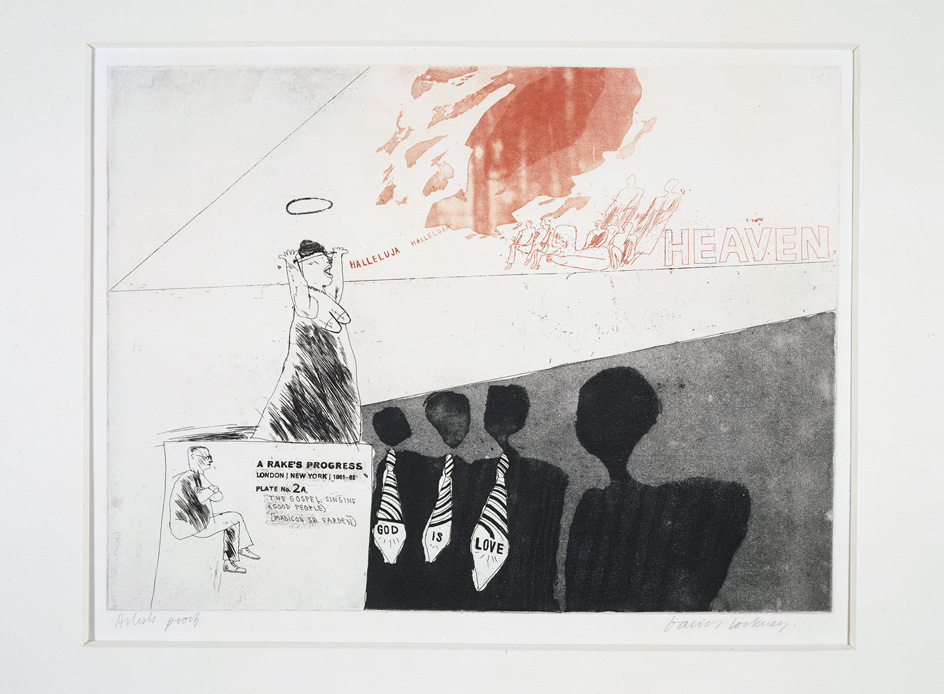A Rake’s Progress (1961-3) is a semi-autobiographical story about the young artist David Hockney, the ‘rake’, and the down and outs of his visit to New York in July 1961. The format, story and numbering system is based on William Hogarth’s 1735 set of prints of the same title. Hogarth’s 18th-century prints tell of the decline and fall of Tom Rakewell, a spendthrift son and heir of a rich merchant, who comes to London, wastes all his money on luxurious living, prostitution and gambling, and as a consequence is imprisoned in the Fleet Prison and ultimately Bedlam.
Originally Hockney’s intention was to produce 24 etchings, as a book; however, this was later reduced down to 16 etchings and partly in aquatint and printed by C. H. Welch, London in two colours. It was published as a portfolio in December 1963 by Editions Alecto Ltd, in association with the Royal College of Art where Hockney was still at student. He tells the story of arriving in New York, receiving money, dying his hair blonde, marrying an old maid, losing money, with his eventual fate not the Bedlam prison but Bedlam, the mindless masses of the ‘other people’, the only way of distinguishing the ‘rake’ from the other robotic figures is by a small arrow above his head, he has finally been subsumed into the uniform crowd where personal identity has disappeared.
The singer in print 2A is Mahalia Jackson whom Hockney heard for the first time in Madison Square Gardens, New York. He also met there the three men on whose ties the words of the inscription ‘ God is Love’ were separately written.


